Pselaphid Beetles
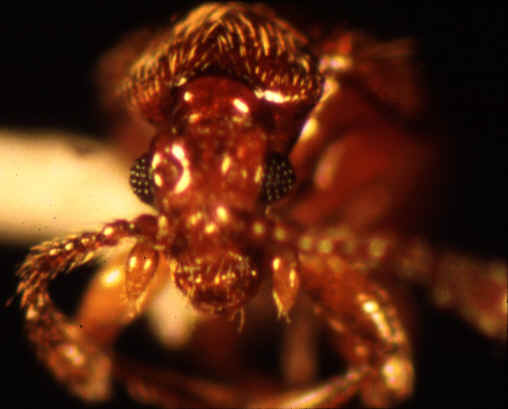
Reichenbachia sp.
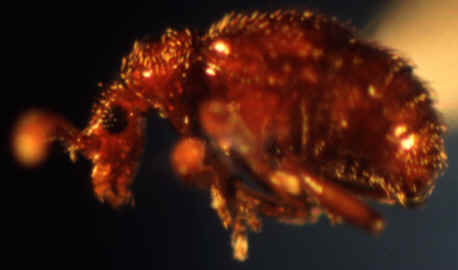
Reichenbachia sp.
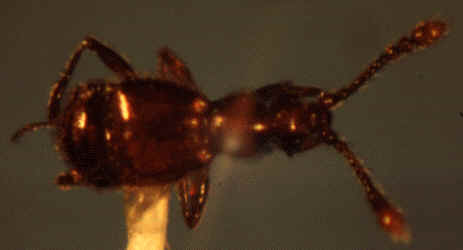
Cylindrarctus sp.
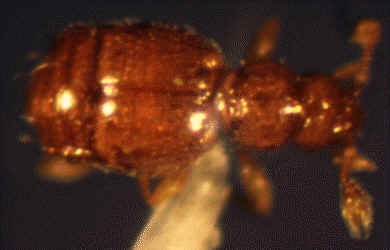
Melba sp.
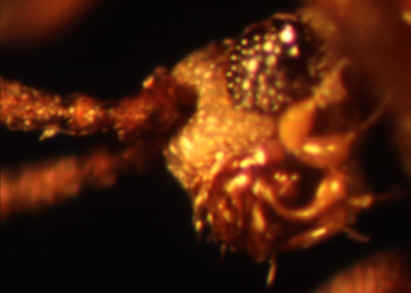
palps of Ctenisodes sp.

Ctenisodes sp.
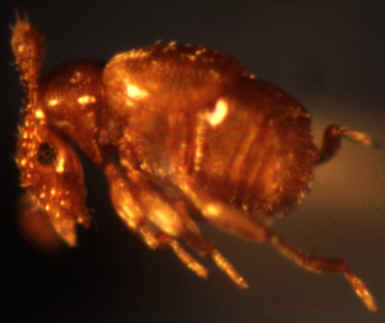
Reichenbachia sp.
They come in a wonderful array of interesting shapes often with clubbed antennae and interesting palps. Their beautiful morphology and wide range - they can be found pretty much anywhere when insects can be found - have made them a favorite of entomologists.
Despite being found everywhere, probably even in the woods or vacant lots near you, they can be very hard to find. And their habits and life histories are largely unknown. Specimens are captured at lights or extracted from soil samples, yet we don't know what they do. Of the thousands of species we only know what the larvae look like for a handful. Imagine, here in the overgrown wood lot near you is an animal that has maybe been found once, attracted to a light, and we don't know where their young are and we don't know what they eat or where exactly they live!
Are they actually rare, or just we don't know where to look? It seems like the former, as we have looked pretty much everywhere at least in the Northern latitudes. Yet the beetles must find each other to mate, right? I spent a lot of time as a graduate student collecting and hunting for beetles, especially looking for pselaphids and I haven't found more than a few dozen. Some species I have but one specimen that came to a light trap (a bedsheet hung by a bright lantern) that showed up one night only. I have gone back many times and found nothing.
We do know a little about what they are doing. First off, we are pretty sure most are solo hunters of springtails or other small mites and insects in moist rotten logs, leaf litter, grass clumps or under stones. We know this mainly by their morphology (like the shape of their jaws).
We also know they are often found with ants, or in the same habitats as ants. Many species of pselaphids live in ant nests, and fool the ants into taking care of them! Interstingly there are some ants (like species of Strumigenys that look similar (caramel colored with elaborate morphology), are also slow moving, are found in the same habitat and eat the same thing.
Solitary, slow-moving hunters of small arthropods that live in moist habitats under rocks or in plant matter. Often found near ants. That's what we know! There aren't a lot of people who study them. Entomologists focus on economically important insects or on describing the many, many species, there is little time or resources to delve into the backyard mysteries of pselpahids.
Are you as surprised as I that such mystery as the lives of pselaphids exists right under our noses? Are you intrigued by the possibility of cracking the riddle of these furtive insect jewels? The world of biological research awaits you in that vacant lot over there!
On a personal note, as a biology graduate student I wanted to study pselpahids. But I could not find enough of them. I did find some live Tmesiphorus with help (thank you Lloyd Davis!) but could not keep them alive. I ended up working with ants and then sort of gave up all together. Now, after going into other fields, I still stop to look in rotten logs for things. I have a project with a local state park to study ants and related beetles. Some day the break will come and we will solve the mystery of the pselpahids!
Links
I will try to add internet resources as I find them, hopefully to get back in the pselaphid psaddle again!
What follows below I wrote 20 years ago, back when I was mad that the family Pselaphidae was subsumed into Staphylinidae. I'm still a little mad about it, but it does not in any way detract from the wonder of these marvelous creatures. If you do have specimens, I would love to help you with your research, or direct you to someone more expert in the field.
Classification
- Phylum Arthropoda (insects, spiders, crustaceans and more)
- Class Hexapoda (the insects)
- Order Coleoptera (the beetles)
- Family Staphylinidae (rove beetles)
- Subfamily Pselaphinae
- Family Staphylinidae (rove beetles)
- Order Coleoptera (the beetles)
- Class Hexapoda (the insects)
Commonly known as Ant-loving Beetles, Short-Winged Mold Beetles, or simply, pselaphids
Until recently, they were classified in their own family Pselaphidae (see Newton & Thayer 1995). You will still see many references to them under this name.
Diversity: There are 712 species in the USA, and over 8,000 worldwide. To give you an idea how big this is there are roughly 4,000 species of mammals, 6,000 species of reptiles, and 8,000 species of ants. Beetles are the most diverse group of organisms, with roughly 290,000 species. Pselaphid beetles are found all over the world.
Description:Pselaphids are small beetles, about 0.7mm to 4.5mm, or from the size of a small mosquito to the size of a grain of rice. They all tend to be straw colored (see the pictures below). In the wild they look a little like slow-moving ants. More technically, like rove beetles (Staphylinidae), their elytra are short exposing much of the upper surface of the abdomen, but they are different from rove beetles in that their abdomens are usually not flexible, their antennae are clubbed, and their abdomens tend to be broader than their heads. For further help in identifying pselaphids and other beetle families see Peterson's Field Guide to Beetles. For a more technical key to the beetles see the standard entomological textbook Introduction to Insects.
Pselaphids are very distinctive, but it can be difficult to identify them to the genus level. A very powerful hand lens, jeweler's visor, or best of all, a dissecting microscope will be helpful in identification. The best key to the genera of the United States was made by Donald S. Chandler and appears in the Soil Biology Guide. There are other good keys such as Arnett's Beetles of the United States.
If you're interested in knowing what species it is, there are keys to many genera. If you contact me, I will be glad to tell you if there is a key for the genera you are interested. Better yet, you can send me the specimens. I always love to see new specimens. If it's an "easy one' I might be able to identify it, otherwise I would send it on to one of two experts on pselaphids, Dr. Chris Carlton or Dr. Don Chandler. You may wish to contact them directly.
Natural History: The natural history of Pselaphids is poorly understood, but they can be divided into species that live with ants and free-living species. This is actually a continuum, with some species occasionally being found with ants. The species that live with ants are somehow able to live within the colony without being attacked as any other insect would be. They may fool the ants into thinking they are other ants, or just some inert matter or a dead insect. The ants may feed the beetles directly, as they would any other ant in the colony, or the pselaphids may eat the brood of the ants. I find the interaction of pselaphids with ants very interesting, and it is the subject of my research.
Many other pselaphids are free living, occurring in a variety of habitats that share a few characteristics, namely, they are very moist and they contain decaying plant material. Many species are found in the leaf litter, but they also occur in rotten logs, at the bases of grass clumps, and under boards and rocks. Some species are specialized to live in caves, on mountains, in bogs, on the beach, and in the desert.
All free-living pselaphids eat other smaller animals, such as small insects and their larvae, worms, and mites. Actually, we don't know exactly what most pselaphid species eat, but judging from their similar mouthparts (designed for catching prey, not grinding plants or fungus) and from what we know a few of them eat, we can be pretty sure that the vast majority eat small animals.
Abundance: Unlike insects like mosquitoes or aphids, pselaphids are not abundant. They are small and they live in hidden habitats, thus even people who collect insects do not often encounter them. There are some species that are amazingly scarce. They are known from only one or a few specimens and nothing more. Many are attracted to lights, as moths are, but we don't know where they live in the wild.
Life History: Here is where our lack of knowledge of these beetles really shows. For the over 8,000 species known in the world, only about 12 larvae have been described. Many people have looked very hard for these larvae and not found any. Are we looking in the wrong places? Are the larvae very fast-developing? We don't know the answers. To date, no one has uncovered the complete life history of any pselaphid.
Collecting: No matter where you live, you are probably just a short trip away from a spot where pselaphids live, they may even live in that vacant lot across the street. But as they are small, scarce, and live in hidden places, they can be hard to collect. You rarely just see them in the wild. Here are a few collecting methods.
Hand Collecting: This is the most time consuming, least productive, yet most rewarding method. When you find a pselaphid in the wild, you have a lot of information about where they are found naturally, that you might not get with other methods. Also I like to try and keep them alive and see what they eat and how they behave. Most likely, any observations on behavior or diet you make have never been made before and are valuable scientific information. To find them by hand you need a keen eye. Watch for slow moving, ant-like insects in the following places: in rotten logs, under boards in fields, under rocks (on their underside too) and in ant nests. Look carefully, as some pselaphids 'play dead' when first disturbed. Looking in leaf litter is too hard, although if you sift the litter through ¼ or 1/8 inch hardware cloth first, you might find something.
Berlese (burr-LAY-zee) funnel: This is the most productive method of finding pselaphids. To do this, first collect nice moist leaf litter (not sopping wet), and sift it through a ¼ or 1/8 hardware cloth sifter. This will give you a pile of sawdust-like material that may contain a lot of insects and other arthropods running around. You put this in a berlese funnel and let it 'run' for a few nights. For a detailed description on what a berlese funnel is and how to make one see either Peterson's Field Guide to Beetles or Introduction to Insects. Essentially all it is is a funnel with a screen in the middle, and the sifted litter is placed on the screen and a light bulb is placed above. The heat from the light bulb dries out the litter and drives the arthropods out the bottom of the litter, down the funnel, to a dish of alcohol below.
Culture: We know very little about what these beetles eat, how they mate and raise their young. It is impractical to observe these creatures in the wild, so raising them in captivity is the only option left. Just about any observation you can make on a pselaphid species living near you is likely to be new to science.
Housing: Pselaphids,
more than anything else, require high humidity. They can be easily
kept in a small container, such as a baby-food jar, plastic cottage
cheese container, or small plastic petri dishes if you can get
them.
This page is (barely) maintained by Rob Burgess
Visit Rob's Homepage